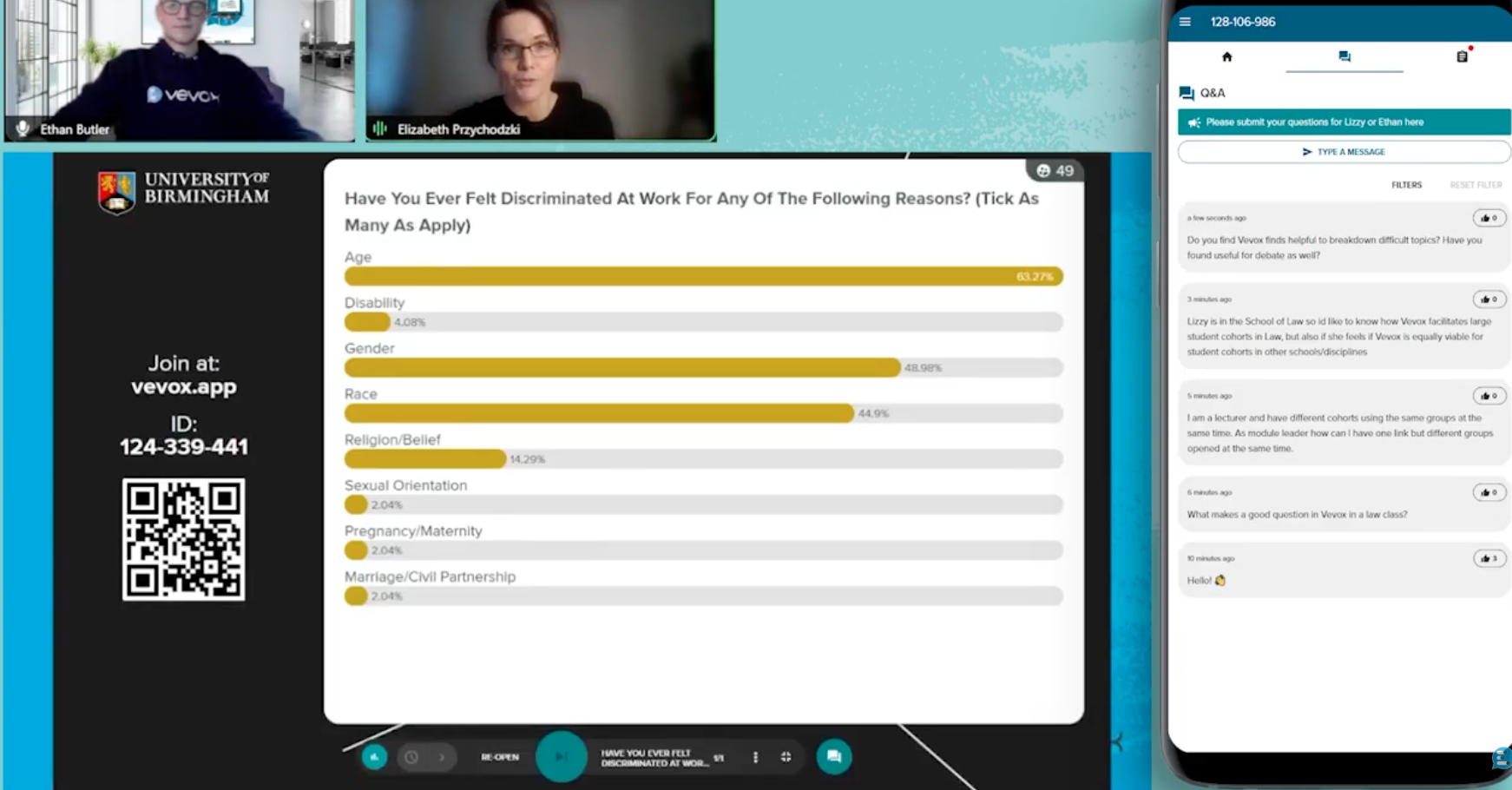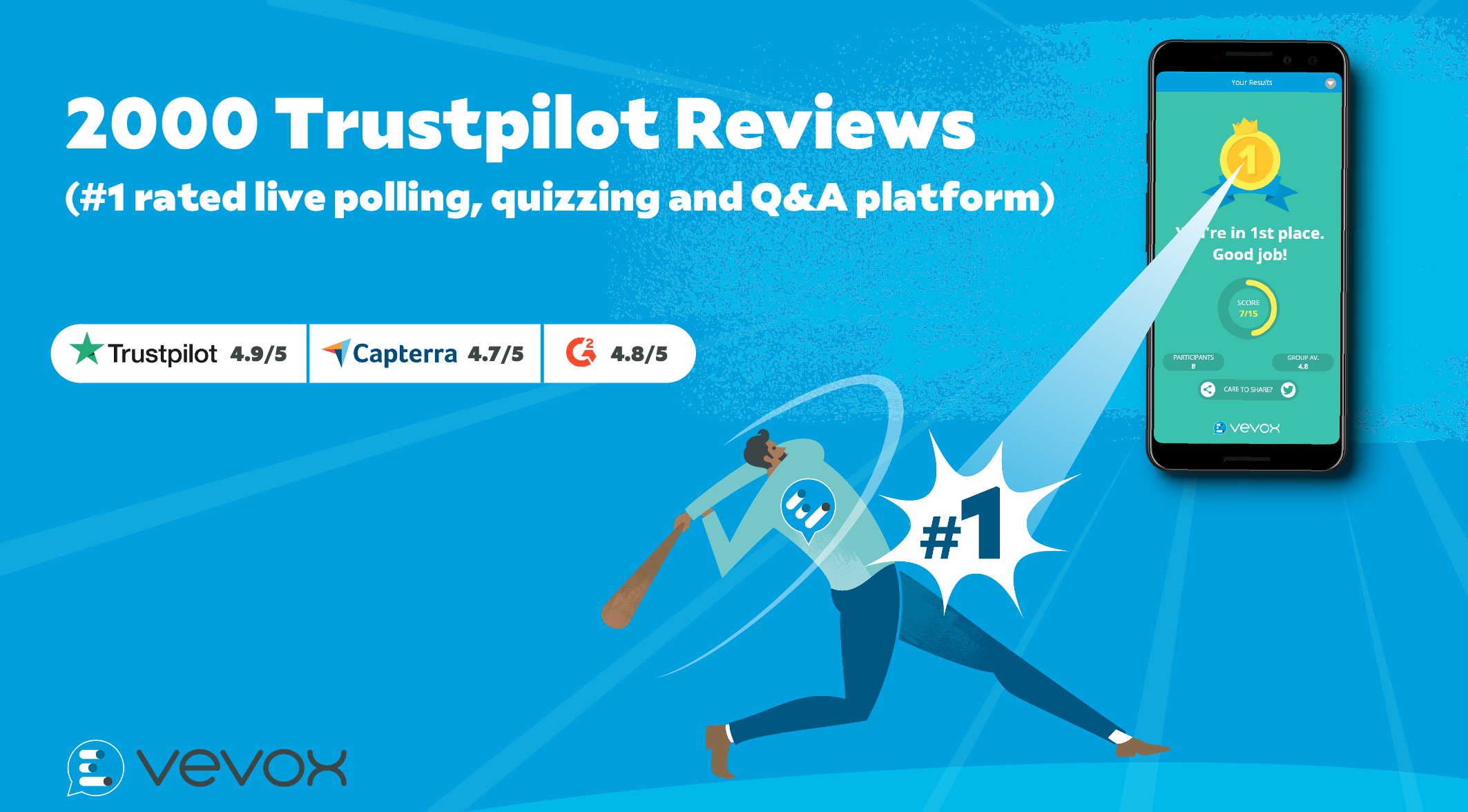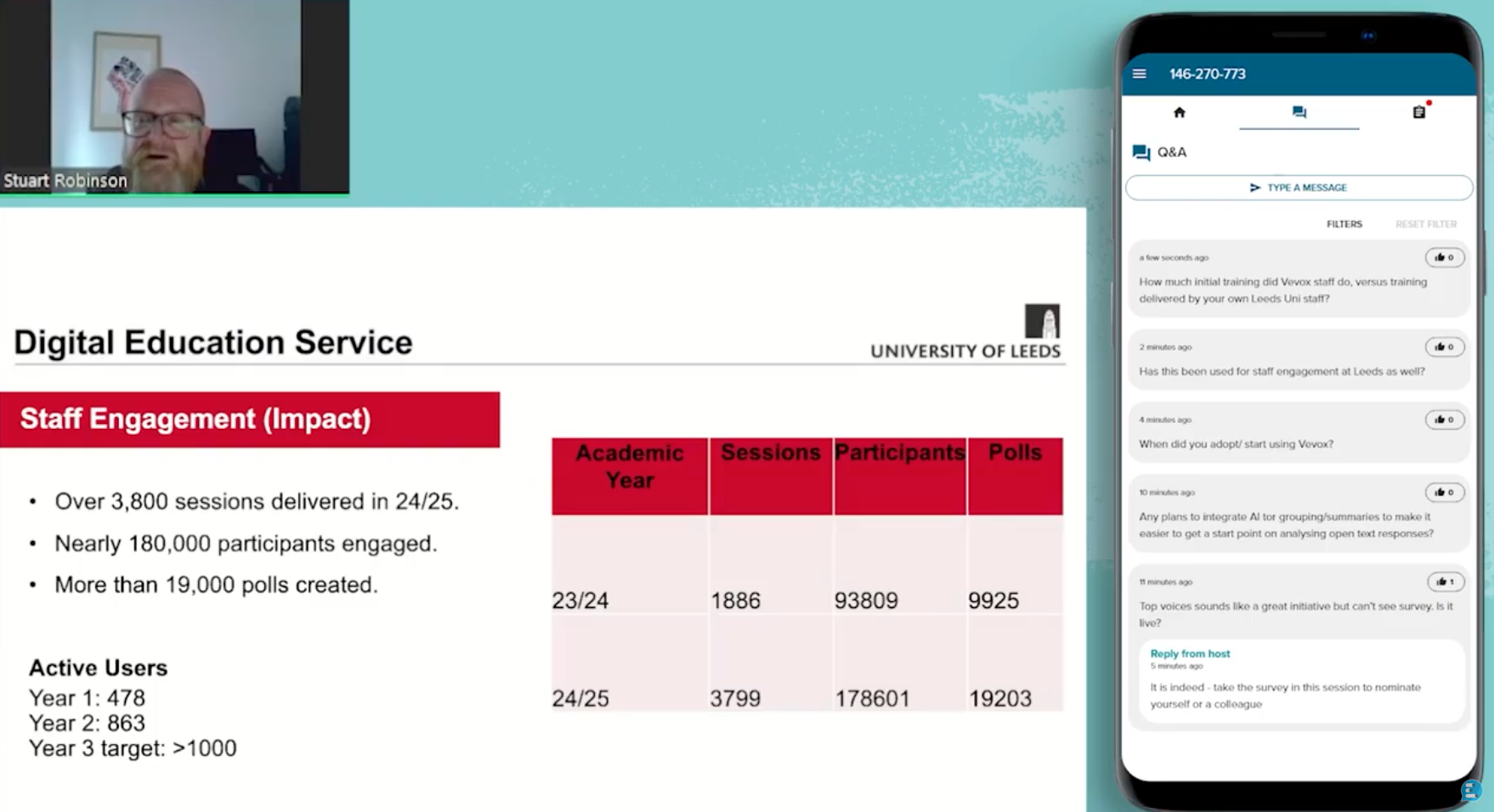We’ve all been there – someone asks a question and we know the answer but we can’t quite recall the information at that particular moment. A version of this is often experienced by students where one week they know a topic and can fluently answer questions but the next week, the information has evaporated. Often referred to as a ‘brain drain’ it is frustrating for both lecturer and student. But can interactive learning help avoid this problem?
Increase engagement
One easy way to help increase engagement during a lesson and therefore increase retention of its content is to use interactive learning. This works by helping students to make connections with the content of their lectures and therefore remembering the content much better. An example of this can be something as simple as a poll during the lesson to get students voting on the main points of the topic – using software such as Vevox can help facilitate this with a variety of devices.
Allowing students to add their opinions to the topic can also help them better retain the information. Harvard professor Eric Mazur explains the effects of being emotionally invested in a topic and found that learning gains tripled in his class when he used this approach. When students become “emotionally invested in the learning” they are more likely to remember the content and avoid brain drain. Polls, quizzes and other interactive learning techniques can be easily incorporated and have great results. Adding polls into lectures is just one of the many interactive learning possibilities offered through Vevox. Educators can also add formative assessment options like worldcloud, open-ended
questions.
Increased interaction
Interactive learning increases interaction between students and this is another way that information can be better retained. The aim of using technology in the classroom is to bring students together, allow them to communicate and collaborate within the lesson. Simple examples such as asking students to discuss answers or move around the room and compare viewpoints with other students can help them gain a thorough understanding of the content.
Critical thinking
Critical thinking skills help students to learn the ‘how’ as well as the ‘what’ of a topic and this in-depth understanding avoids the brain drain, keeping information in context and fresh in the mind. It also helps students sharpen their critical thinking skills as well as their imagination and logic skills to gain a fuller understanding of the topic. This means that they can understand more about the topic, rather than just repeating the content of a lesson.
Make learning fun
Interactive learning can make a lesson more fun and we all know that we remember things better when we have positive associations with them. Humour in education has been shown to be a positive approach that not only aids learning but also builds better relationships between students and teachers as well as between students. By creating a relaxed and positive environment where students can voice their opinion and humour is a part of the lesson, there is a reduced chance that important lecture content is lost at a later stage.
Decreasing brain drain
While interactive learning cannot guarantee to decrease brain drain completely, it is still an excellent approach with a number of additional benefits. Students not only retain more of their lessons but gain a deeper understanding of the topic, develop additional skills and thought processes to help with their studies and even come to find the topic fun and enjoyable.





